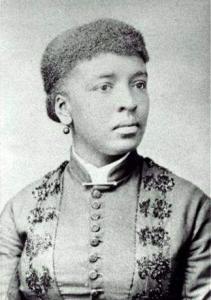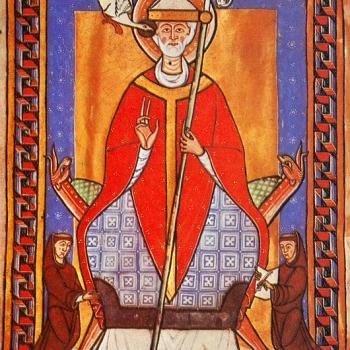Since 1987, March has been recognized as Women’s History Month in the United States. Tomorrow, March 8, is recognized as International Women’s Day. Most of us are probably familiar with this at least on some level– advertising campaigns, social media, and news stories highlight the accomplishments of past women leaders or trailblazers, emphasize current issues of inequality or discrimination, and mix celebrating the roles that women have played in our history with calling for a better future, in which women are given more space, safety, and recognition.
In mainstream culture, however, this emphasis on women’s history doesn’t usually recognize women in the church as part of the story that this month seeks to tell. For those of us in the church, however, I think the story of women in the church is perhaps the most important reason to celebrate and recognize women’s history month! Why does the history of women in the church matter for all of us, women and men, leaders and laity? Women’s history month is especially important for the church because it helps us see the fullness of the body of Christ, in different places and periods. It pushes us to look not just at the pulpits but also at the pews, at the stories and contributions of so many Christians often overlooked in traditional histories.
The Pulpits: Teachers, Theologians, Martyrs, and Missionaries
When one starts studying church history, it quickly becomes apparent that in many ways, the history of the church has always been a history that highlights women. The first believers to encounter and acknowledge the resurrected Christ were women, as we know from all four gospels (Matt. 28:1-10, Mark 16:1-11, Luke 24:1-11, and John 20:11-18). If we think of this as the start of the church, the church’s first members were women. Celsus, a second-century critic of the church, condemned the Christian movement as full of “slaves and women and children,” unwittingly giving us a glimpse into the importance of women in the history of the early church. So many women played pivotal roles in building the church and in serving Christ, from the garden on Resurrection morning to the present– early martyrs like Perpetua and Felicity, theologians like Macrina the Younger and Julian of Norwich, reformers like Argula von Grumbach and Olympia Morata, missionaries like Katharine Bushnell and Louise Celia Fleming, and countless more. As the work of scholars like Nijay Gupta and Elizabeth Muir, fellow Anxious Bench authors Beth Allison Barr and Andrea Turpin, and so many others has shown, women have been everywhere throughout church history.

Many of these works highlight the women who have led, or taught, or served in noticeable roles in their churches or in congregations overseas. This is a good thing for the church: in learning about these women, we see many varied models of holiness and of godly service, whether working far from home or working within the home. Women like Katharina Schutz Zell show that it’s possible to be a wife, mother, theologian, and evangelist all at the same time, if that is where your calling and gifting lies. Other women like Dr. Annie Dove Denmark, one of the first female presidents of a South Carolina College and the first woman to be president of the Baptist State Convention, demonstrate godly lives of leadership and service, along with models of faithful singleness. We need models like this, examples that show us that following Christ faithfully does not always look one specific way.
The Pews: The Full Body of Christ
In highlighting these more well-known women in church history, sometimes I worry that sometimes we also lose sight of the women who aren’t mentioned in these narratives: the nameless women of the past who didn’t leave behind hagiographies or sermons or mission organizations, but faithfully and quietly served in their churches and communities in many ways throughout the entirety of their lives. Ann Braude references these unnamed women in her chapter “Women’s History Is American Religious History” in Retelling U.S. Religious History (1997). In this work, she argues that “the story of religion in America” is “the story of women’s presence”–a story that, like the broader story of the church, features “women as the majority of participants in religion” (92; 88). Braude’s chapter is worth reading in its entirety for her arguments about our perceptions of the church, about power, and about the United States, but one of her main points is that we cannot tell the history of the church by only focusing on the leaders: we can only tell the history of the church by also considering every part of the body, by remembering and studying those left out of a historical narrative focused on leaders or accomplishments. As Braude puts it in her conclusion, “we cannot expect to understand the history of religion in America until we know at least as much about the women who have formed the majority of participants as we do about the male minority who have stood in the pulpit” (107).
To me, this is part of why Women’s History Month matters: looking for women in church history sometimes shows us leaders or teachers or heroes, yes, but it often also shows us the uncelebrated and unseen members of the church, giving us a glimpse of the fullness of the body of Christ, with its many giftings and callings. Because women have so often been written out of more traditional histories, when we go looking for women, we often find them serving and working alongside men also deemed unworthy of mention in historical narratives: the laity who have formed the majority of the church throughout its history but rarely appear in history books. Looking for women in the history of the church sometimes points us towards the pulpit, but it often points us towards the pews, where the 98% of us who are not pastors or ordained leaders sit and serve. Turning to the pews lets us see the full beauty of the body of Christ. We start to notice the quiet service of those, women and men, who do the church gardening, who faithfully work in ministries that get no spotlight or stage, who leave legacies of faithfulness and sacrifice often noticed only by those who knew them. Women’s History Month gives us a chance as a church to not only recognize women who should have been written into the history books all along, but also a chance to refocus and to see the body of Christ more fully, in all its beauty.













